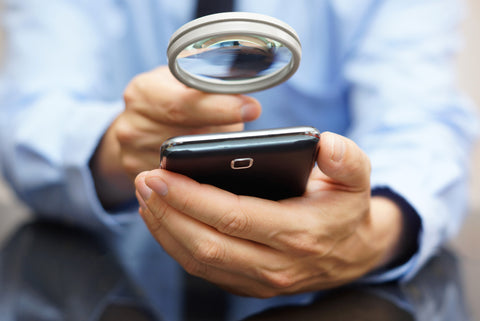The WaveWall Blog
How Safe Is Your Mobile Phone?
Mobile radiation is a contentious issue that attracts widely differing responses. Some people see it as extremely important, are concerned about its impact on their health, and give it a high priority when choosing a phone. Others downplay it, seeing it as a marketing ploy by companies trying to sell hands-free units and protective cases.
Government regulators tend to fall between these two positions. Manufacturers selling mobile phones in most Western countries have to disclose their products’ SAR ratings. (‘SAR’ stands for ‘Specific Absorption Rate’, and is the official calculation showing how much radiation each phone model produces.) This disclosure ensures that buyers who are concerned about safety can make an informed choice.

You may be tempted to assume that any phone being sold legally must be ‘safe’. But the position is more complicated than that. For a start, the recommended limit for radiation absorption varies from country to country. The European Union and Australia have a 2.0 w/kg limit, for example, while the United States and Canada have a more restrictive limit of 1.6 w/kg. Any phone on the market is (hopefully) going to meet the above legal requirements, but that doesn’t mean it performs especially well. There may be much safer phones you can buy.
To find these safer phones you need to compare each model’s SAR rating. But getting hold of a centralised list of SAR ratings across all manufacturers and models can be difficult. By law, the SAR rating should be printed in the user manual or other printed matter that comes with the phone. But this is useless if you want to carry out research before making a purchase.
So how can you compare different phones? For readers in America, you will be pleased to know that the FCC does publish this information on its website, calculated for U.S. available phones. Unfortunately, the FCC website is less than intuitive, and can be intimidating for anyone other than a seasoned internet researcher.
Tech website CNET is another source of information. They offer a compilation of the top 20 best and worst mobile phones, based on SAR classifications. This comparison is very useful, as it puts the phones’ safety in a clear context.
It’s important to remember that SAR ratings are not the whole story. Where you carry your phone is also an important factor in determining how much radiation you absorb. Most manufacturers try to cover themselves by telling you not to carry the phone less than 15mm (a little more than half an inch) from the body. This is unrealistic, given that most people carry their phone in trouser or jacket pockets, where it is highly likely to be closer than 15mm. True, coat pockets, purses, clips or holsters would qualify as safe. But these are not the predominant way in which phones are carried.
As we saw at the outset, the extent to which mobile phone radiation is harmful is contentious. But the fact that governments are regulating the amount of radiation phones produce, and that phone companies are warning people not to carry them too close to the body, both imply that mobile phone radiation is a hazard that it pays to be wary of.
You may also be interested in…
